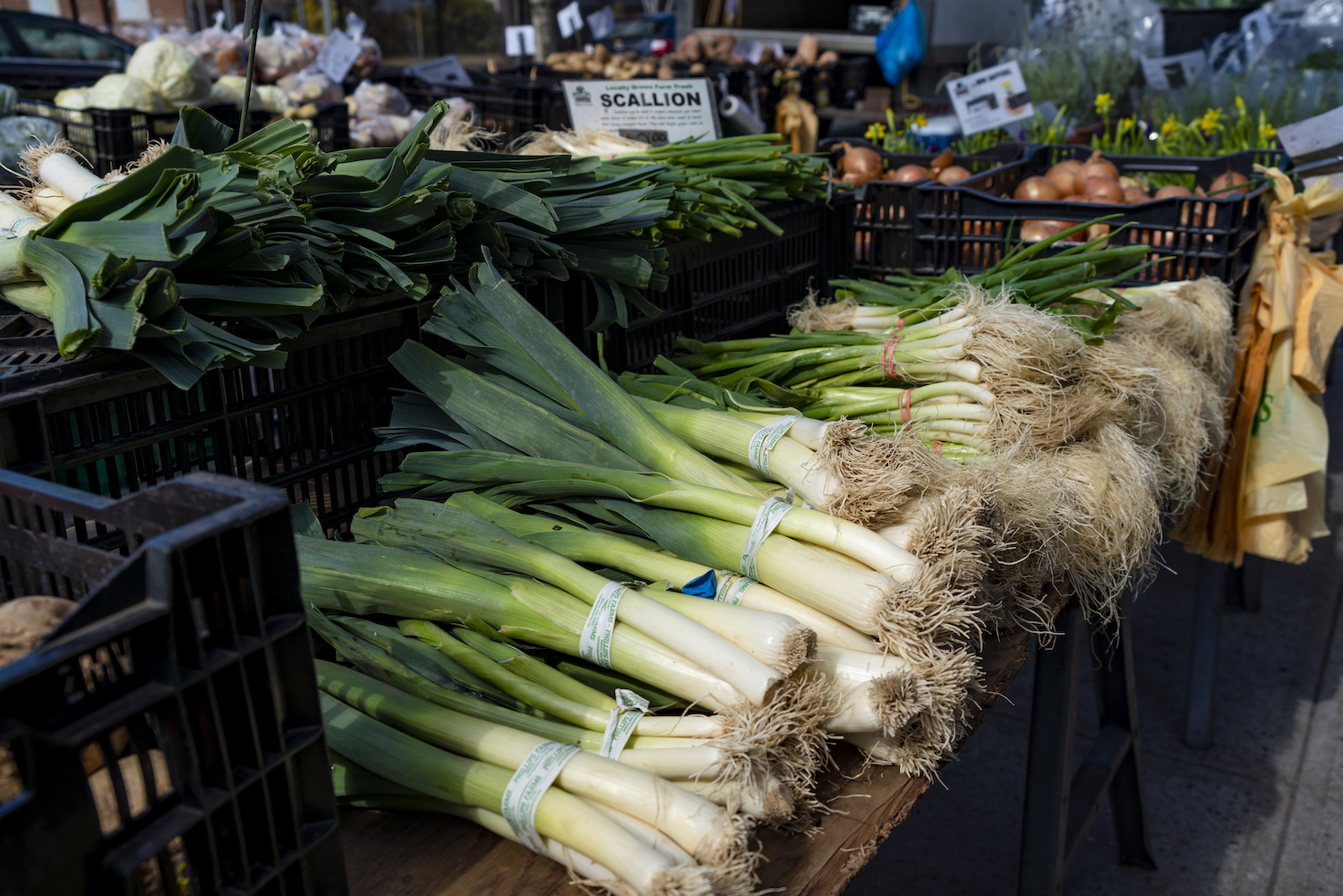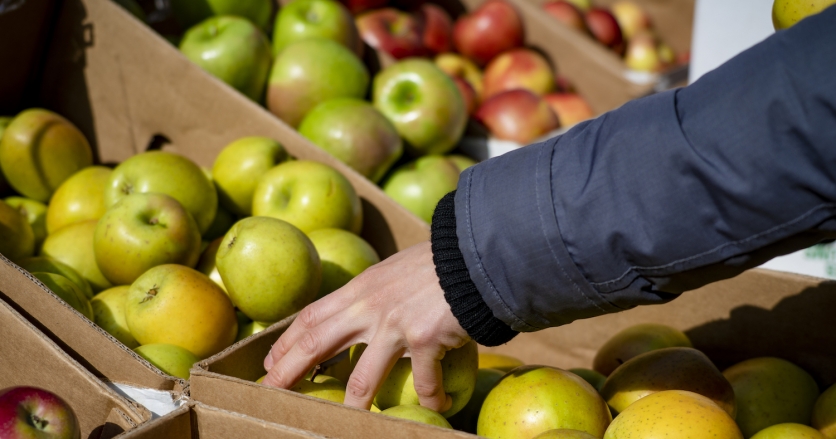Queens Grocery Diaries
Editor's Note: This article was written before the COVID-19 crisis for what would have been our print Women's Issue.
Queens is best known for its diversity in terms of the wealth of international cultures that reside in its neighborhoods. This is most evident in the borough’s food: Tibetan momos, Indian samosas, Greek dolmas, Filipino kamayan feasts, Korean soondae, Sichuan dan dan mian and more. But beyond restaurants, delis and specialty stores, Queens’ diversity is also seen in its home kitchens—from the groceries purchased to the food put on the table.
A grocery receipt is enough to get a peek at another person’s entire week, their home and lifestyle, their upbringing and family traditions, their preferred tastes, how they think about food and what they value in a meal.
These four Queens women welcomed us into their homes and gave us a look into their grocery bags and kitchens. While they vary in their approach to grocery shopping and cooking, and live very different lives, their love of Queens unites them.
Name: Tara Purswani
Neighborhood: Sunnyside
Age: 39
Number of people in family: 1
Occupation: Yoga teacher/freelance writer and editor
Household income: under $30,000/year
Grocery budget: $100–$120/week
Tara Purswani has lived in Queens all her life, and was raised on a mix of Greek food from the Astoria neighborhood where she grew up, her mother’s literally cheesy Midwestern cooking and spicy dishes from her father’s Indian heritage.
“My parents would always take me there [to Jackson Heights] because we would get Indian groceries, or we would eat out,” Purswani says.
While she still enjoys visiting specialty stores, like Patel Brothers in Jackson Heights or a Japanese grocery store on the border of Sunnyside and Woodside, these days she’s more of a Trader Joe’s person. “I go to Trader Joe’s every Friday religiously because I teach a yoga class by the Trader Joe’s on 33rd and Park,” she says. She typically gets dry ravioli, taco shells, crackers, fish patties and even $2 easy-cook Indian food packets. The only thing she doesn’t purchase there is fresh produce, which she buys at local grocery stores like Fresh and Save.
This routine was established since Purswani left her full-time job to pursue her passions. “I realized I’m not earning as much, and I was kind of tired of eating the same things,” she says. “When I was eating at home, I would have the same go-to quick meals. And so I just one day decided that I had to learn how to cook.”
Purswani still craves the rich and spicy meat-based foods that she grew up with. It took her three tries, but with the help of her mom and her childhood best friend’s mother, Purswani’s managed to master the perfect lasagna, which she plans to translate into veggie-centric versions starring eggplant and zucchini.
Name: Scarlett Valdez
Neighborhood: Sunnyside
Age: 42
Number of people in family: 3
Occupation: Housewife
Household income: $45,000/year
Grocery budget: $180/week
Though Scarlett Valdez has lived in the United States since 1995, she cooks for her partner, Domingo, and their 17-year-old daughter, as though she never left the Dominican Republic.
She learned how to cook by watching her grandmother and mother in the kitchen growing up. A typical breakfast means a vegetable omelet, sometimes with bread, for her partner who owns and runs a barber shop in Queens. Her daughter prefers a serving of different fruits, typically including pineapple or kiwi. For lunch, Valdez eats a heavy meal of mangú, a traditional Dominican dish made of boiled plantains.
For family dinners, Valdez likes making La Bandera Dominicana, which literally translates to “the flag of the Dominican Republic,” referring to one of the country’s signature dishes made of beans, white rice, salad and beef or chicken.
Every week, Valdez buys meat and vegetables from her local supermarket, and fruit from a store 10 blocks from their apartment. Once a month, she stocks up on her family’s pantry staples: rice and beans. “This ’hood is very expensive,” she says of Sunnyside, which is why her spending for groceries swells to about $180 weekly.
She recalls how genuinely fresh, and much more affordable and accessible ingredients were in her country of origin. “Everything is fresh there! They have sabanero, recaito. In the backyard, they have plants. Sour orange, they use a lot in soup,” she says. “It’s hard to find here. Everything is different.”
Name: Sara Waber
Neighborhood: Astoria
Age: 29
Number of people in family: 2
Occupation: Video producer
Household income: $120,000/year
Grocery budget: $60/week
Sara Waber, who grew up learning how to cook from her dad in Jackson Heights, now lives in Astoria with her husband, Chris, who is a vegetarian. Key Food is her go-to supermarket, but on occasion she shops at Food Story if she feels like splurging on organic produce. Becoming a primarily vegetarian household has made Waber more creative with her cooking, making meatless versions of Greek and Middleastern favorites, like mushroom kofta meatballs.
Easy dishes they often cook for dinner include pasta, quesadillas, homemade pizza, curried chickpea and lentil dal or Waber’s childhood favorite: Goya black bean soup and egg noodle combo. Other staples in their kitchen include onions, peppers and tomatoes.
Breakfast is never a priority, except on the weekends. “I like to make home fries with potatoes and onions and peppers, and we’ll do sunny-side-up eggs with cheese, or breakfast burritos,” Waber says. For weekday lunches, she and her husband usually either pack leftovers, or eat out near their respective offices.
Waber doesn’t do much meal-prepping, as she likes to base meals on her mood. “We’re always just thinking the day of what we’re going to make, but then that means I feel like I spend too much money every time I go to the store… But that’s fine.”
Name: Lily Jen
Neighborhood: Sunnyside
Age: 28
Number of people in family: 2
Occupation: Designer at a media company
Household income: $165,000/year
Grocery budget: $125/week
Lily Jen buys groceries practically every day, on the way home to the Sunnyside apartment she shares with her partner. “I usually go to the green market, or to Whole Foods, or to a local bodega-like grocery store,” she says. Her favorite place to shop is the green market, where she buys bread. “I have high standards for bread.”
Other staples are milk (oat and regular whole milk), and rice from a Japanese grocery store.
“Honestly, I kind of wish we never started doing that because it’s hard to go back now. The grain separation is just so beautiful, and the texture’s amazing. It’s chewy, and comes out al dente,” she says. “The problem is, it costs $15 and the bag is really small, so I have to buy a new one once every couple weeks or so.”
Jen cooks dinner almost every night. “... I’ll usually just make sure that I have enough stuff in my grocery cart so that I can do that [cook a balanced meal] for several nights. And I usually make more than I need so that I can bring leftovers to work the next day.”
“I’m not sure, but I probably spend way more than I’d like to admit.”








